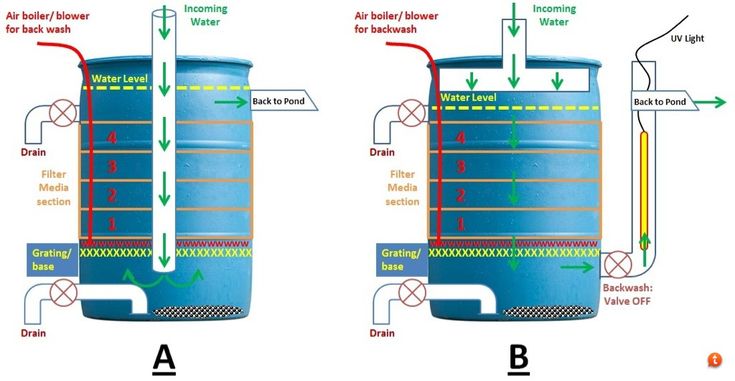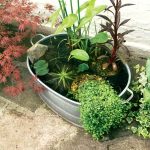Title: How to Build a Large Pond Filter: A Step-by-Step Guide
Are you a pond enthusiast looking to maintain crystal-clear water in your large pond? Building a large pond filter can be an effective solution to keep your water clean and your aquatic life healthy. In this comprehensive guide, we will walk you through the process of building a large pond filter, providing step-by-step instructions and valuable tips to help you achieve optimal filtration for your pond.
Understanding the Importance of a Large Pond Filter
Before we delve into the construction process, it’s crucial to understand the significance of a well-designed pond filter. A large pond filter plays a pivotal role in maintaining water quality by removing debris, organic matter, and harmful substances that can compromise the health of your pond’s ecosystem. By investing in a robust filtration system, you can create a balanced and thriving aquatic environment for your fish, plants, and other pond inhabitants.
Selecting the Right Location for Your Large Pond Filter
The first step in building a large pond filter is determining the optimal location for installation. Ideally, you should position the filter near the edge of the pond for easy access and maintenance. Additionally, ensure that the chosen location allows for proper water circulation and efficient integration with the existing pond infrastructure.
Gathering the Necessary Materials and Tools
To construct a large pond filter, you will need the following materials and tools:
– Plastic barrel or container (large enough to accommodate the filter media)
– PVC pipes and fittings
– Submersible pond pump
– Filter media (such as lava rocks, bio-balls, or filter mats)
– Waterproof sealant
– Drill and hole saw attachment
– Pipe cutter
– Measuring tape
– Marker
Step-by-Step Construction Process
Now, let’s dive into the step-by-step process of building a large pond filter:
Step 1: Prepare the Barrel or Container
Start by selecting a sturdy plastic barrel or container that can serve as the main body of your pond filter. Use a marker to outline the locations for inlet and outlet holes on the barrel. The inlet hole will accommodate the water intake from the pond, while the outlet hole will connect to the pump for water circulation.
Step 2: Create Inlet and Outlet Openings
Using a drill fitted with a hole saw attachment, carefully cut out the marked inlet and outlet holes on the barrel. Take precise measurements to ensure a snug fit for the PVC pipes that will be inserted into these openings.
Step 3: Install PVC Inlet and Outlet Pipes
Insert the PVC pipes into the inlet and outlet holes, securing them in place with waterproof sealant to prevent any leaks. The inlet pipe will draw water from the pond into the filter, while the outlet pipe will facilitate the return of filtered water to the pond.
Step 4: Configure the Internal Filter Components
Within the barrel, create a layered system using filter media such as lava rocks, bio-balls, or filter mats. These components will trap debris and provide a habitat for beneficial bacteria, essential for biological filtration. Arrange the filter media to maximize surface area and promote efficient water filtration.
Step 5: Connect the Submersible Pond Pump
Position the submersible pond pump inside the barrel, ensuring that it is securely anchored and connected to the outlet pipe. The pump will drive the water through the filter media, facilitating the filtration process before returning the clean water to the pond.
Step 6: Test the Filter System
Before finalizing the installation, conduct a thorough test of the filter system to check for any leaks, malfunctions, or inefficiencies. Run the pump and observe the water flow to ensure that the filtration process is functioning as intended.
Step 7: Fine-Tune and Optimize
Once the filter system is operational, fine-tune the settings and configurations to optimize its performance. Monitor the water clarity and quality, making adjustments as necessary to achieve the desired filtration efficiency.
Maintenance and Care Tips
After completing the construction of your large pond filter, it’s crucial to establish a routine maintenance schedule to ensure its long-term effectiveness. Here are some essential maintenance and care tips:
– Regularly clean and inspect the filter media to prevent clogging and maintain optimal filtration.
– Monitor the pump and plumbing components for any signs of wear or damage, addressing issues promptly to prevent disruptions in filtration.
– Test the water quality periodically to assess the effectiveness of the filtration system and address any imbalances or irregularities.
Conclusion
By following this step-by-step guide, you can build a robust and efficient large pond filter to maintain pristine water quality in your pond. Investing the time and effort into constructing a reliable filtration system will contribute to the overall health and vitality of your pond ecosystem, ensuring a thriving habitat for your aquatic companions. With proper maintenance and care, your large pond filter will serve as a cornerstone of water management, allowing you to enjoy a clear and vibrant pond for years to come.




